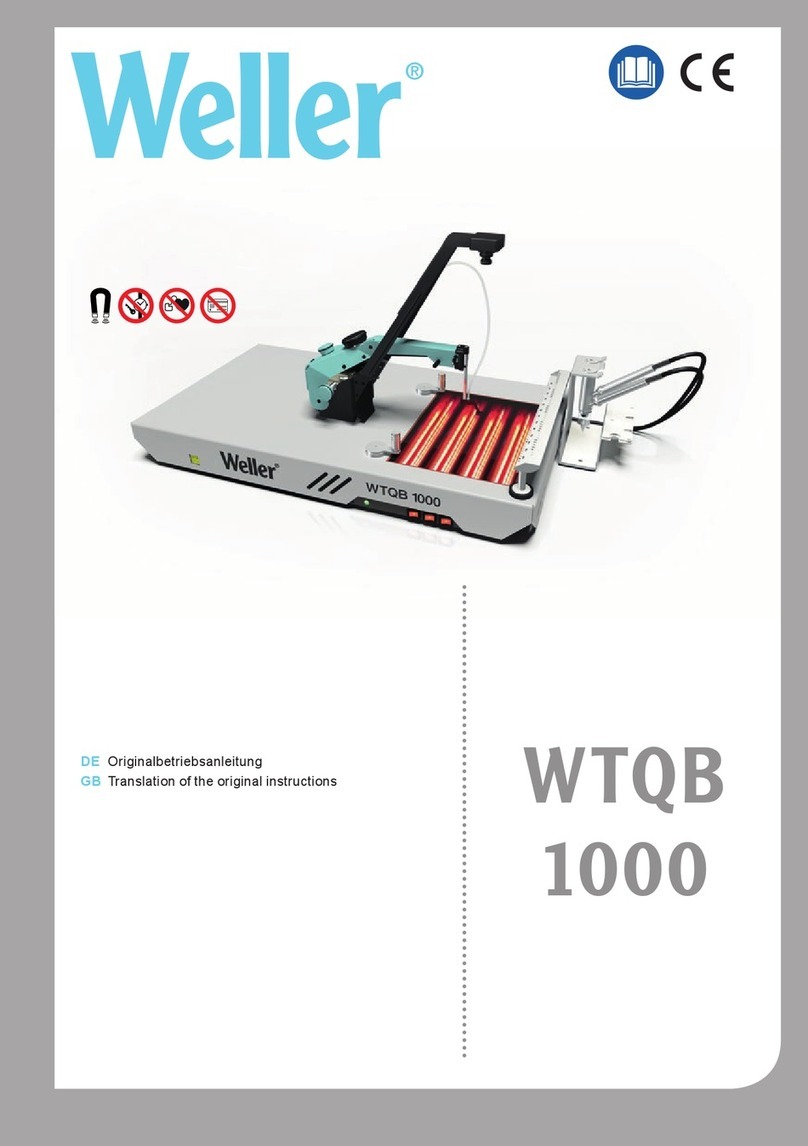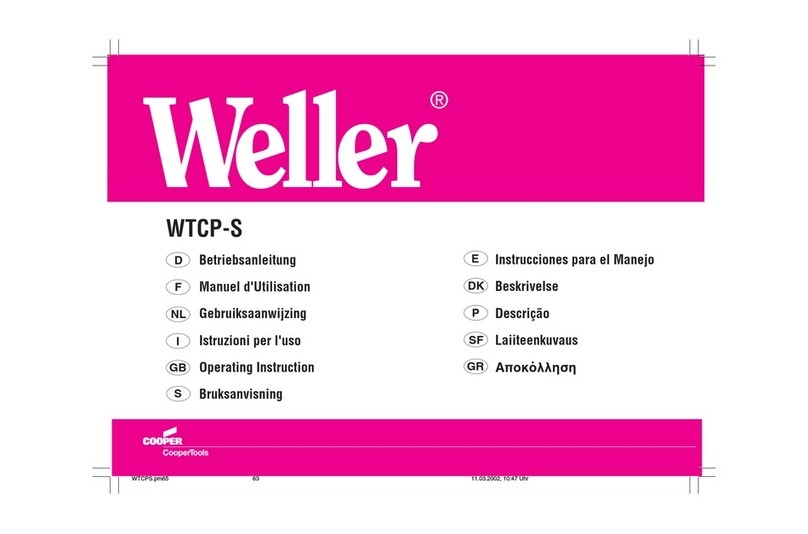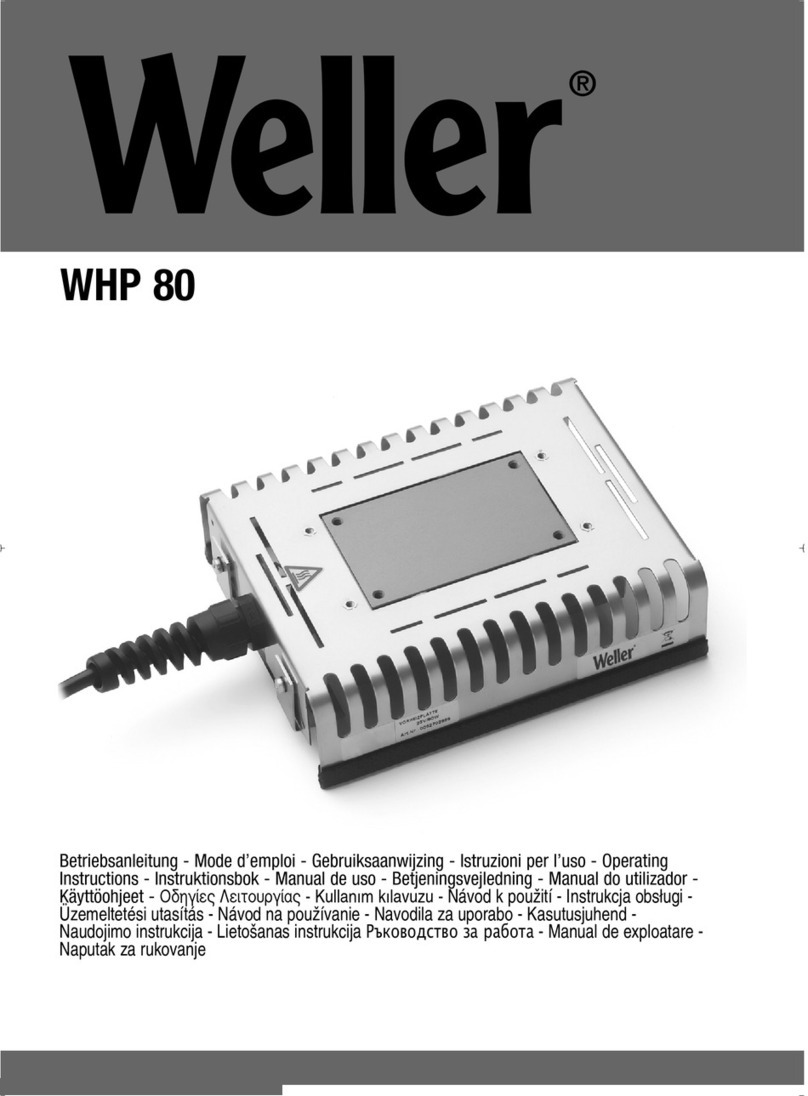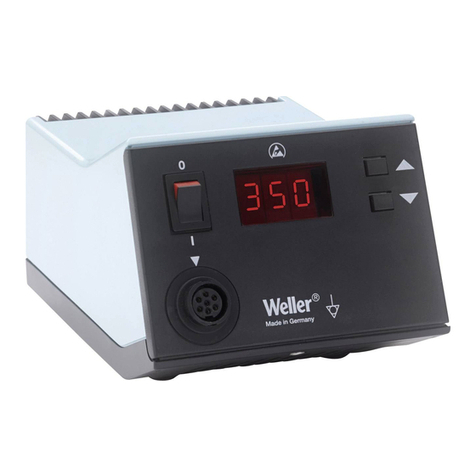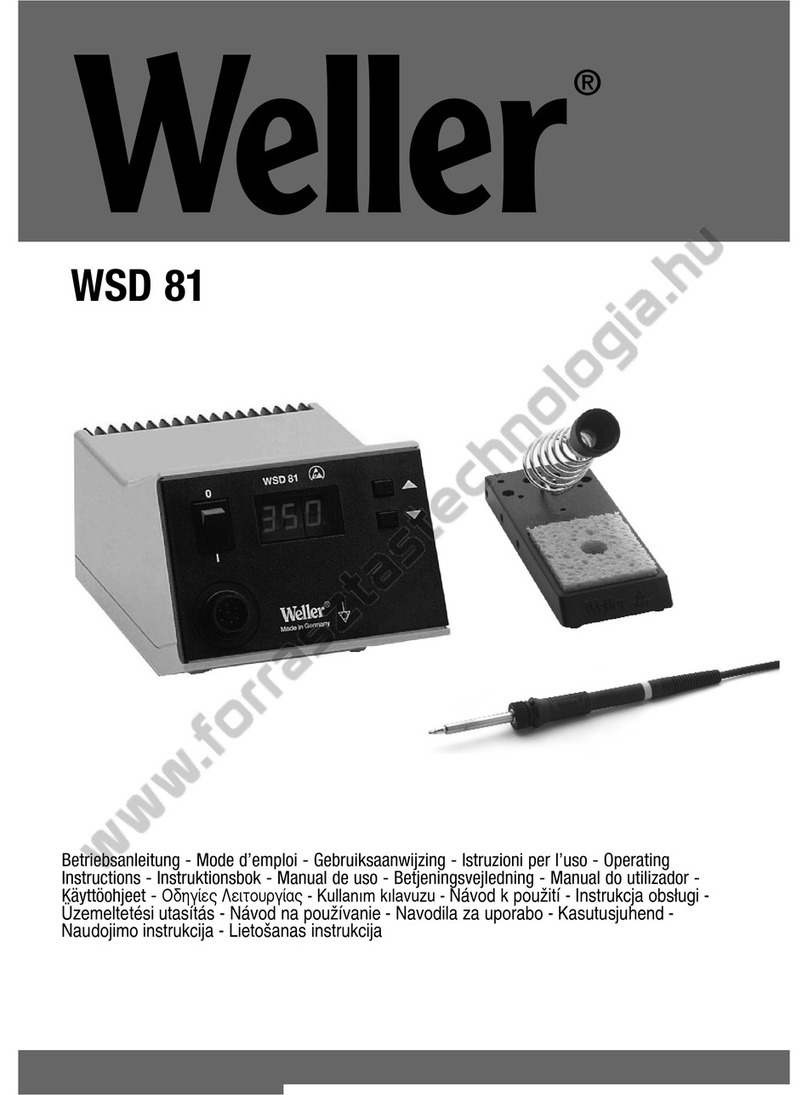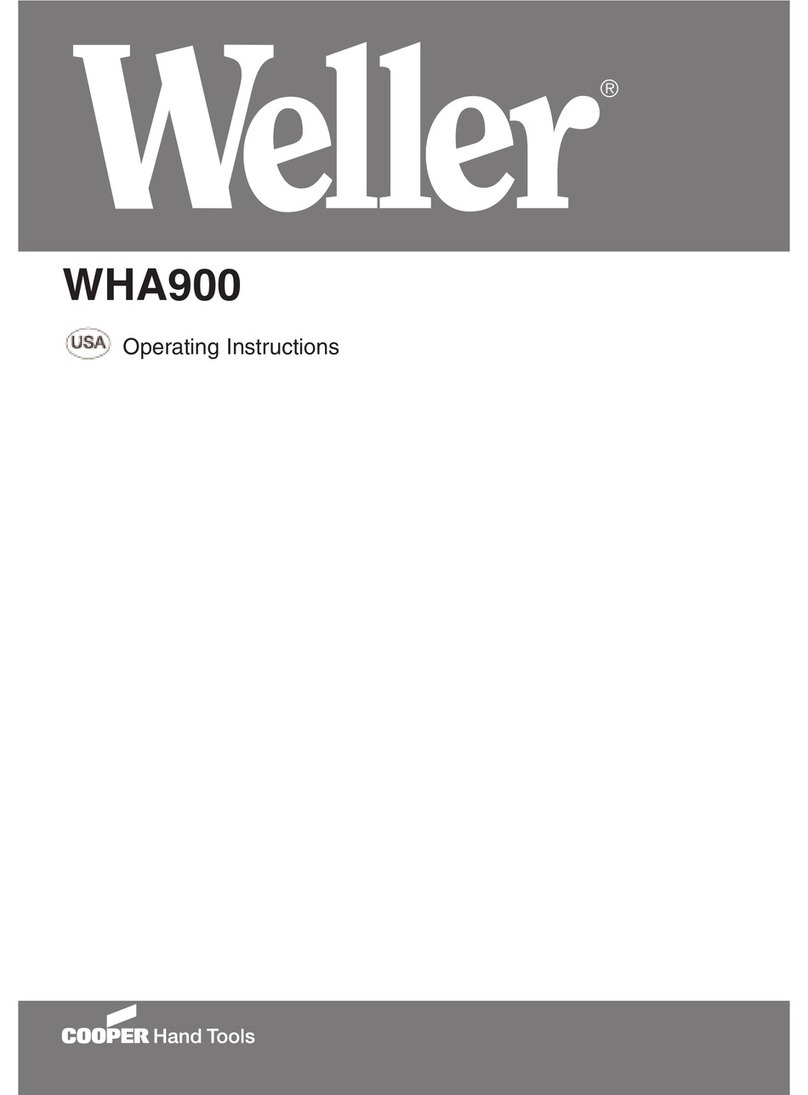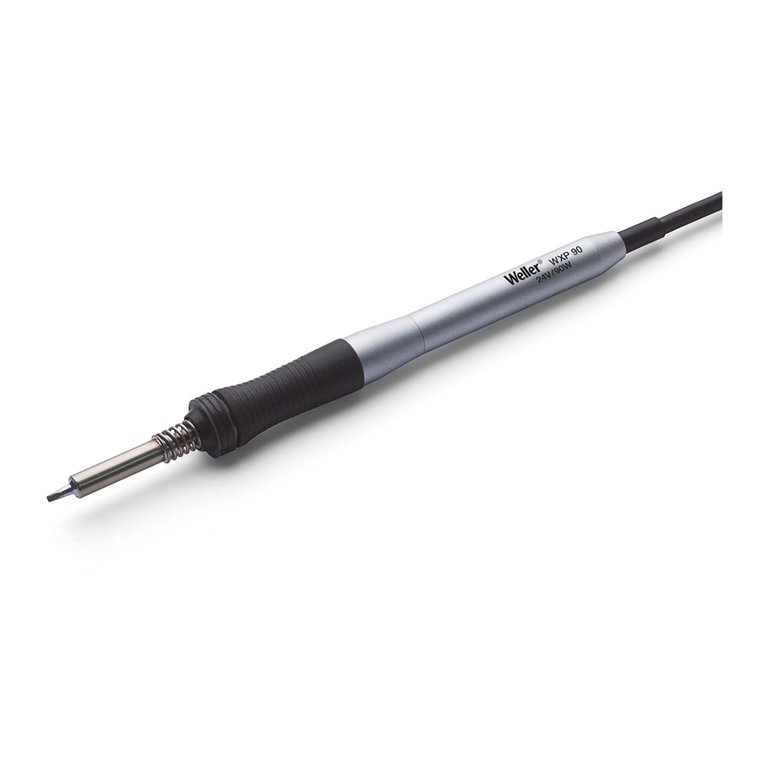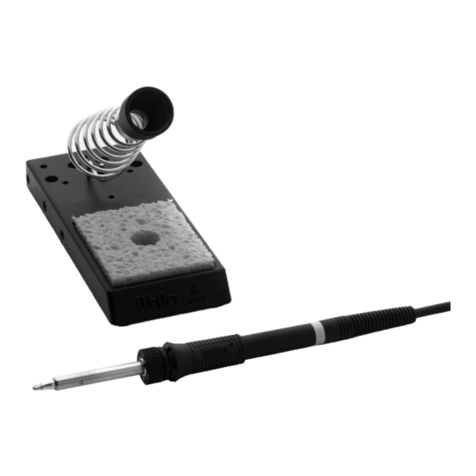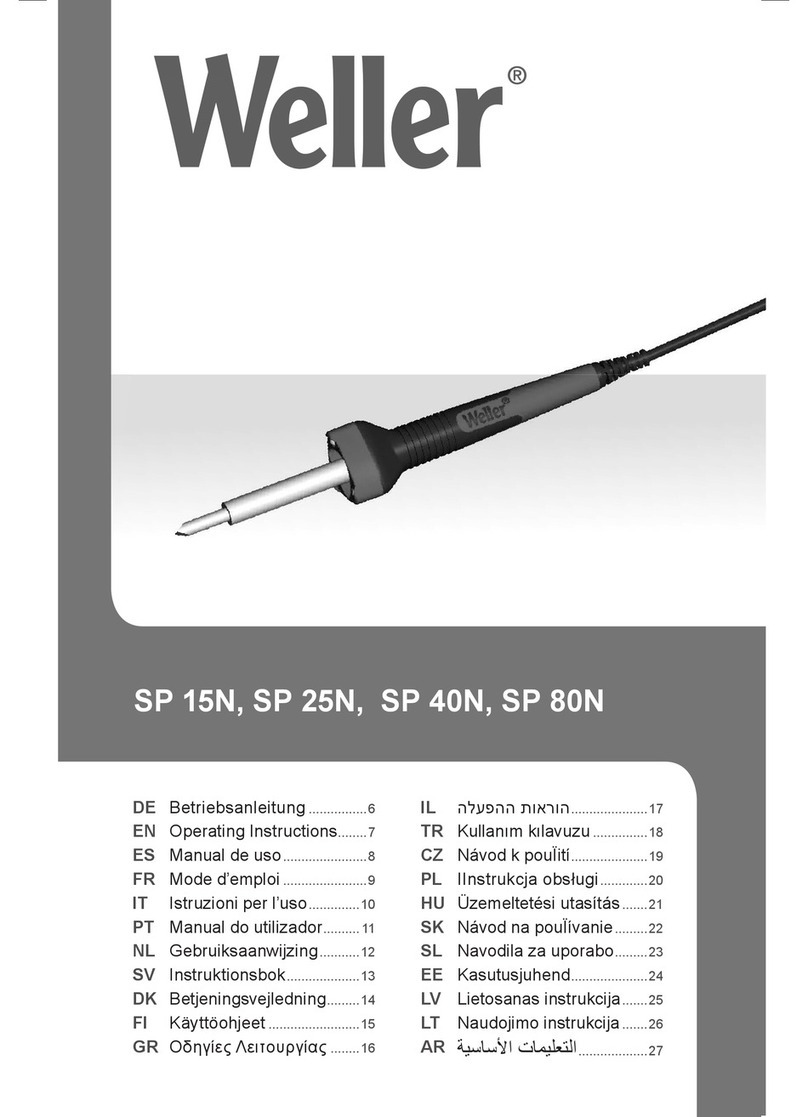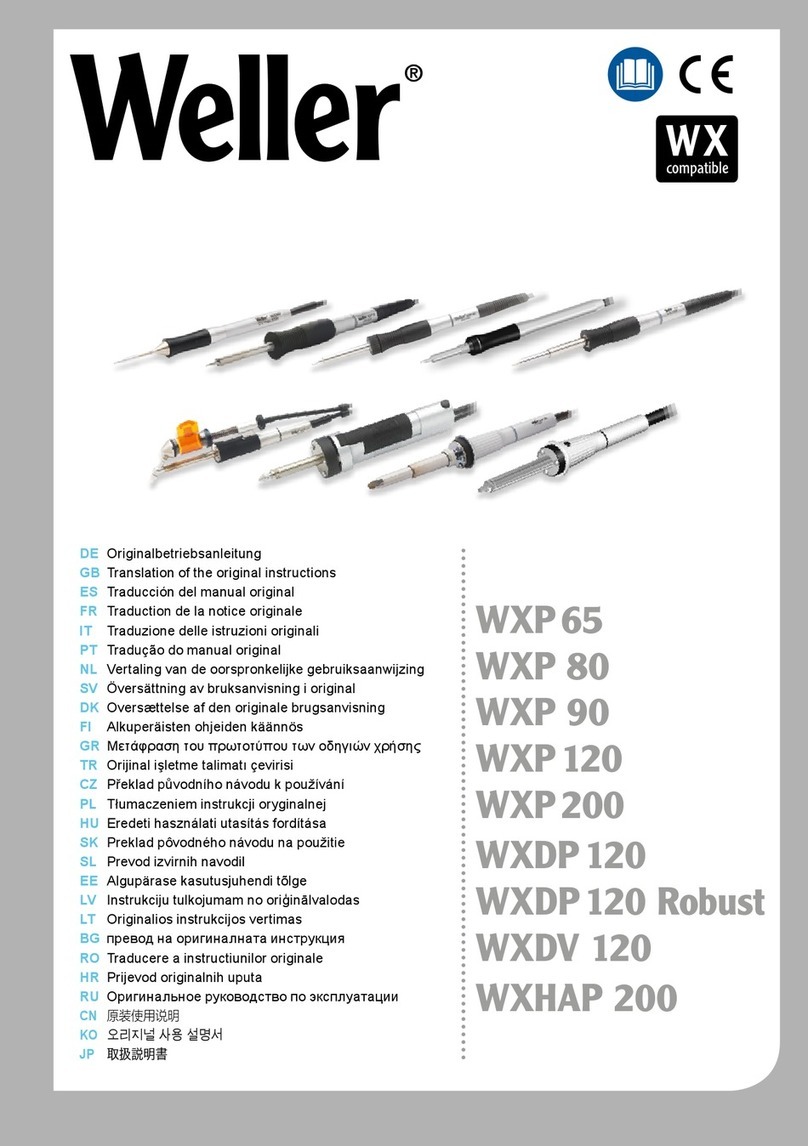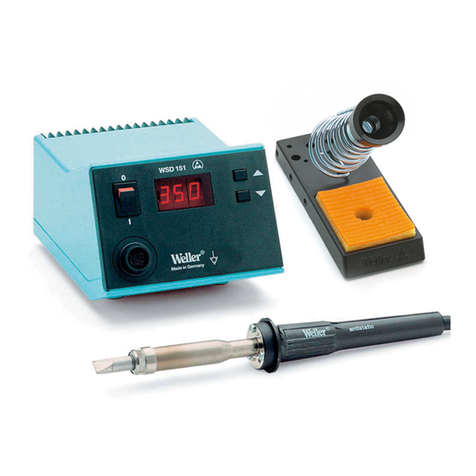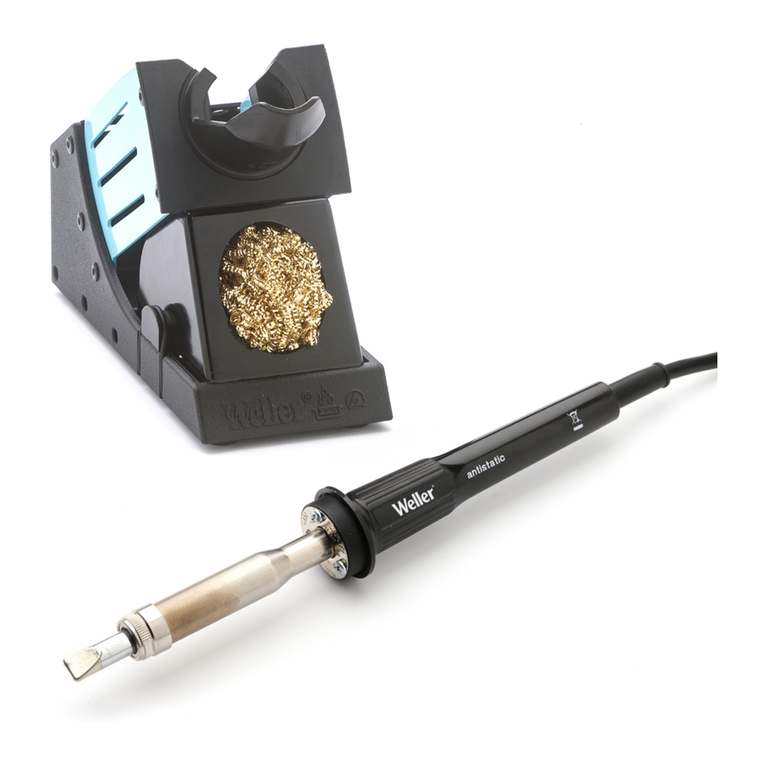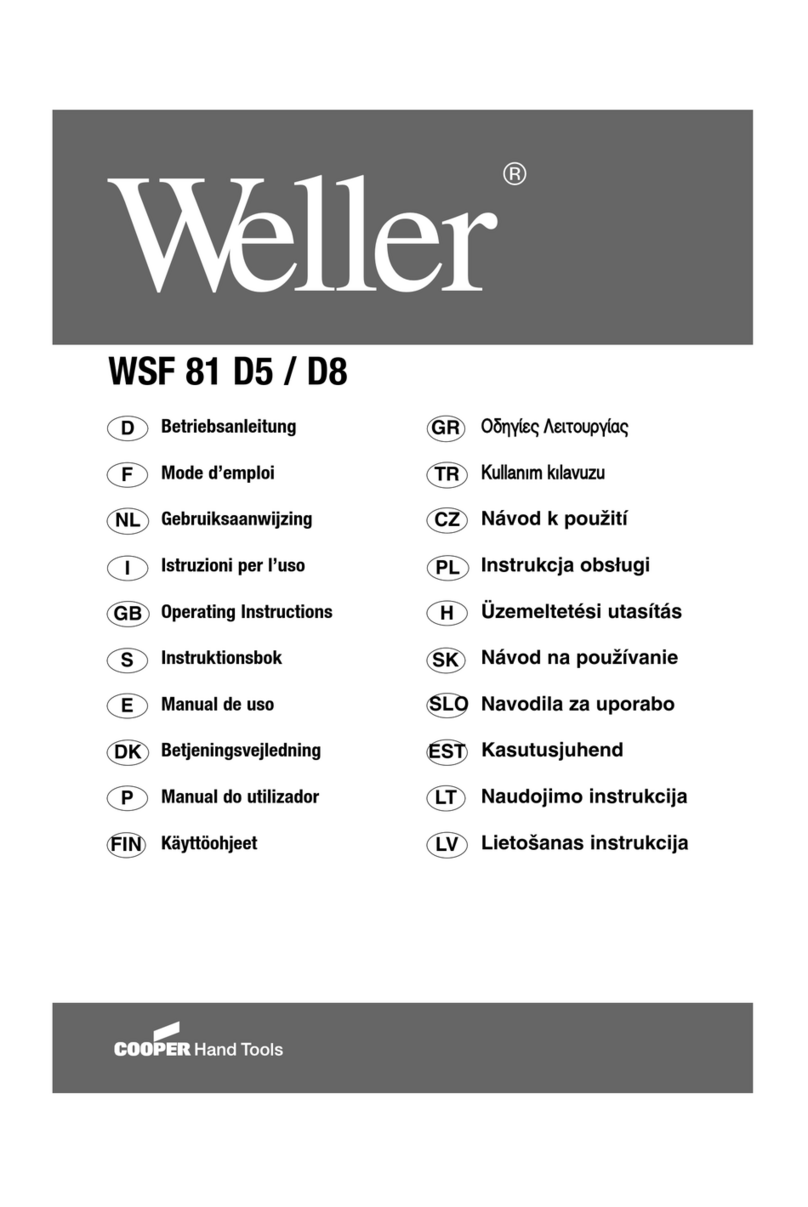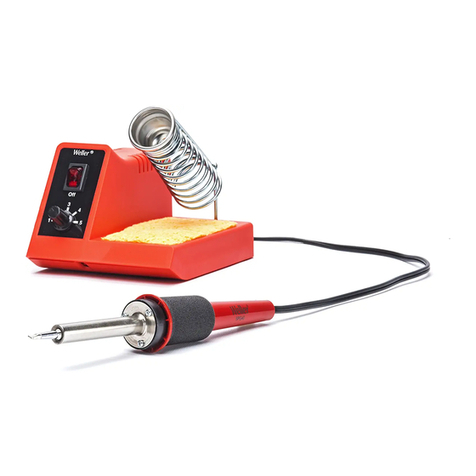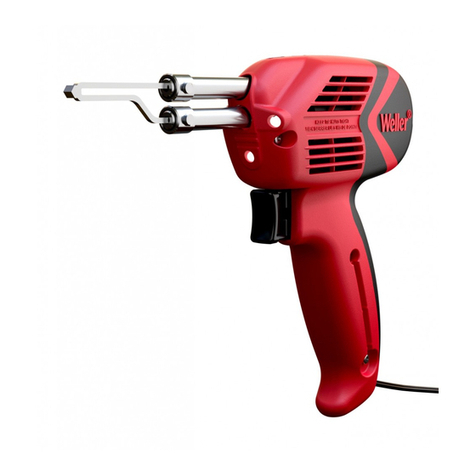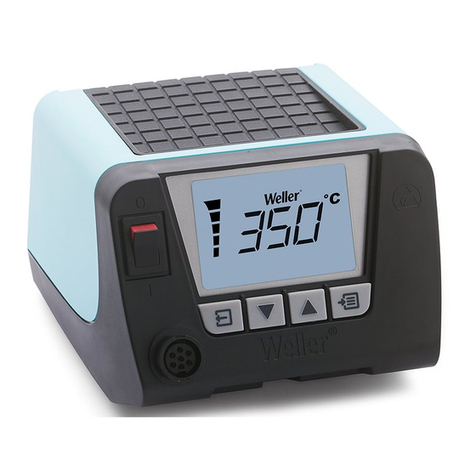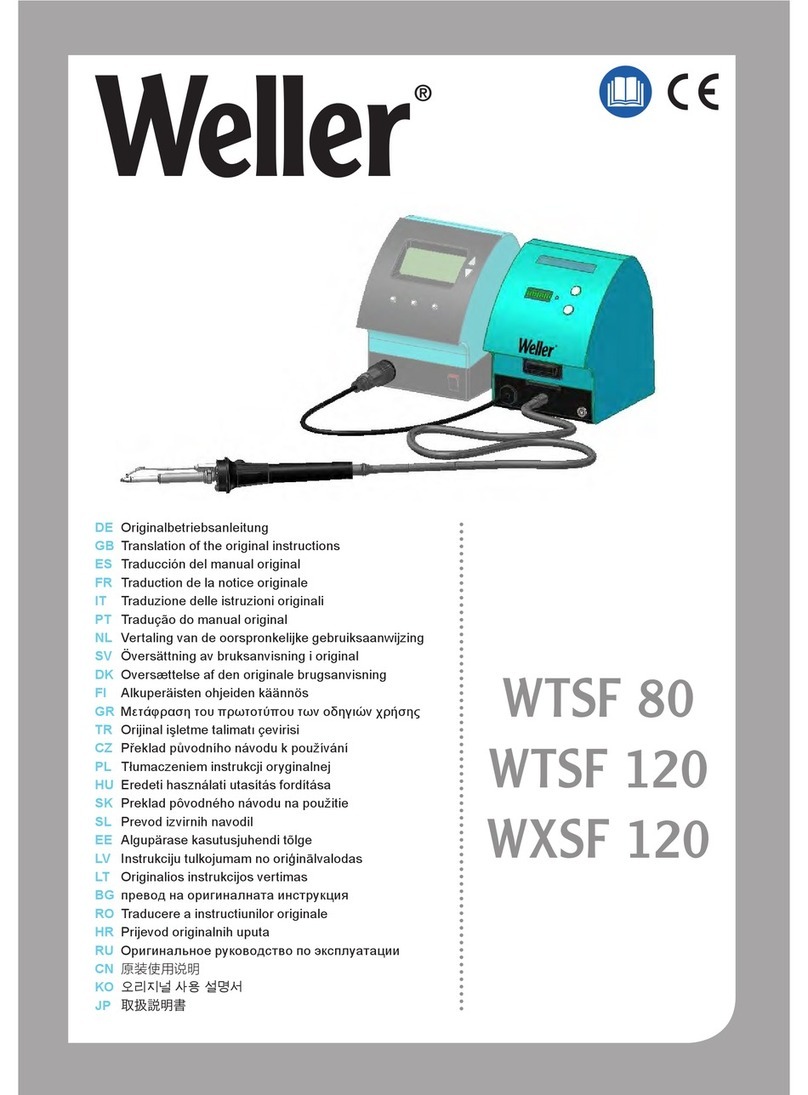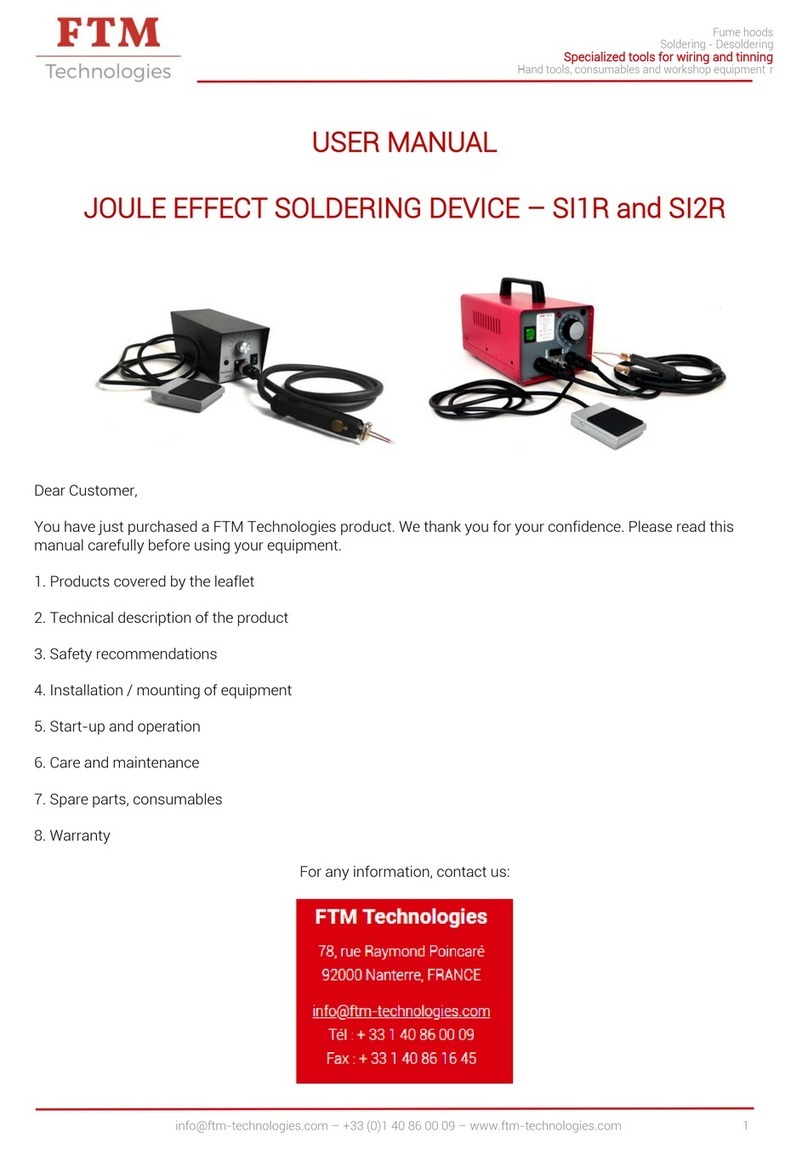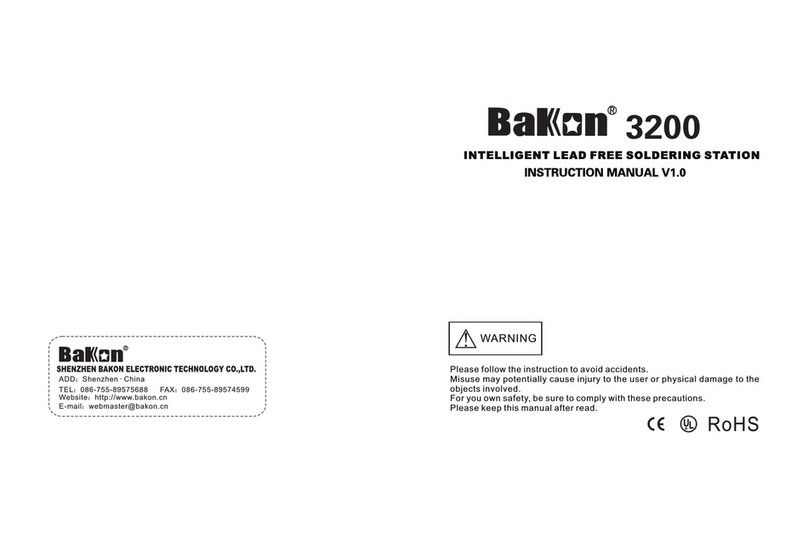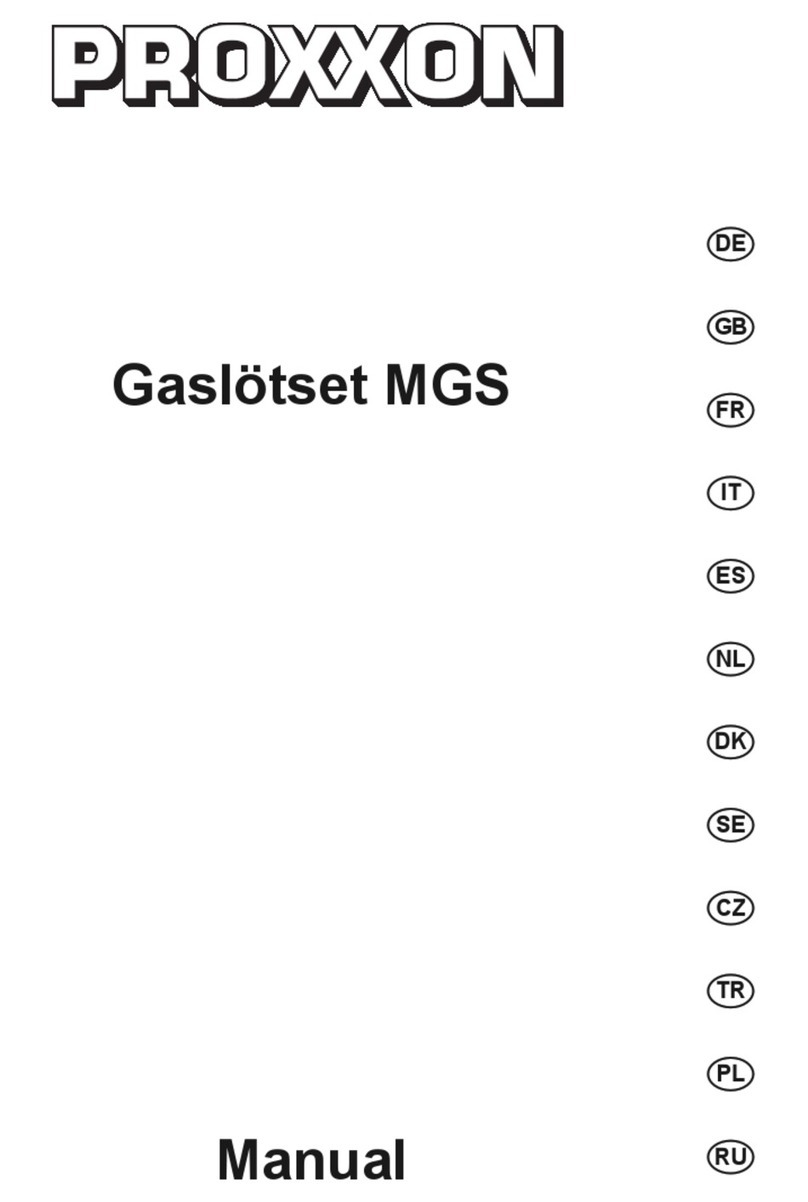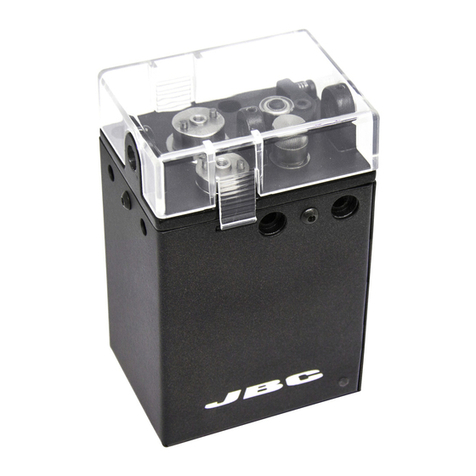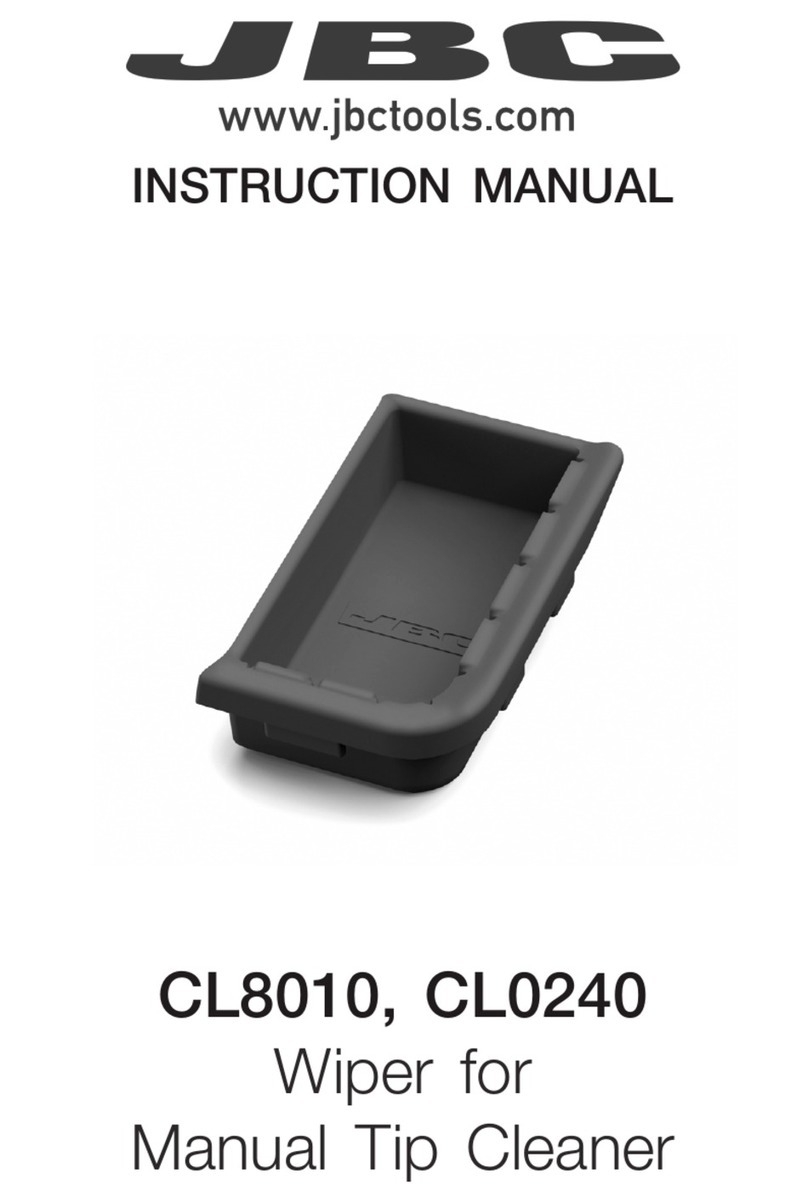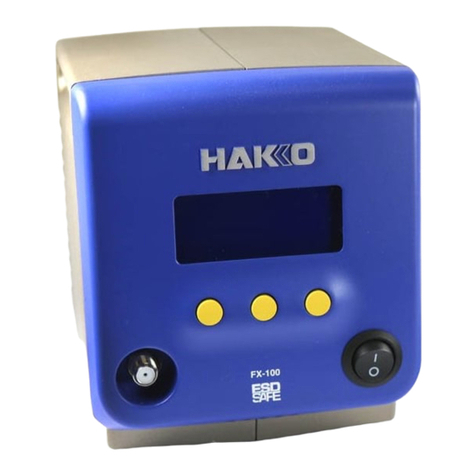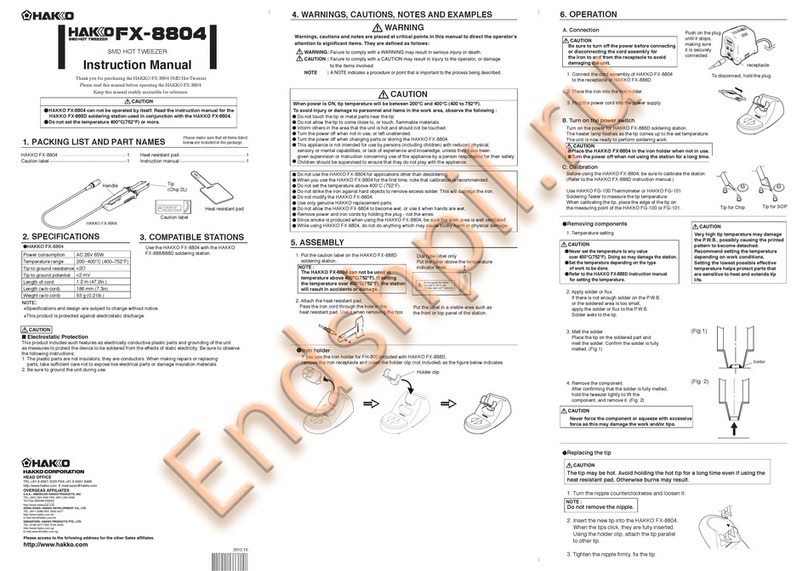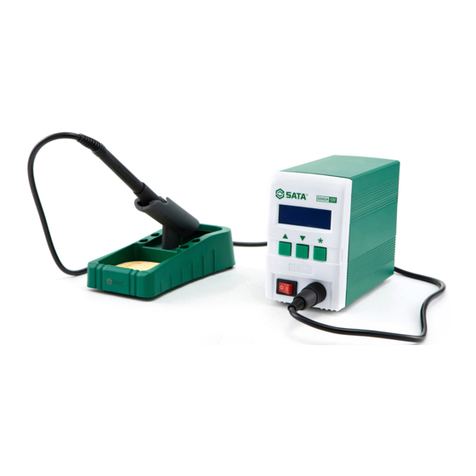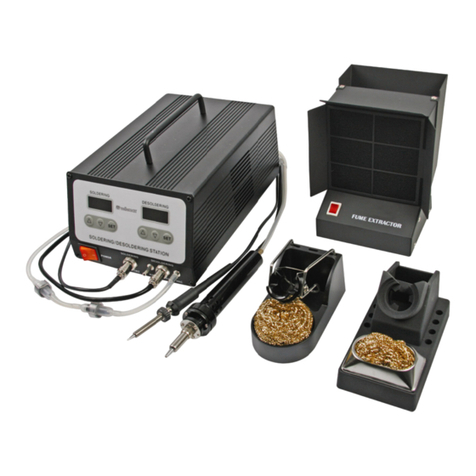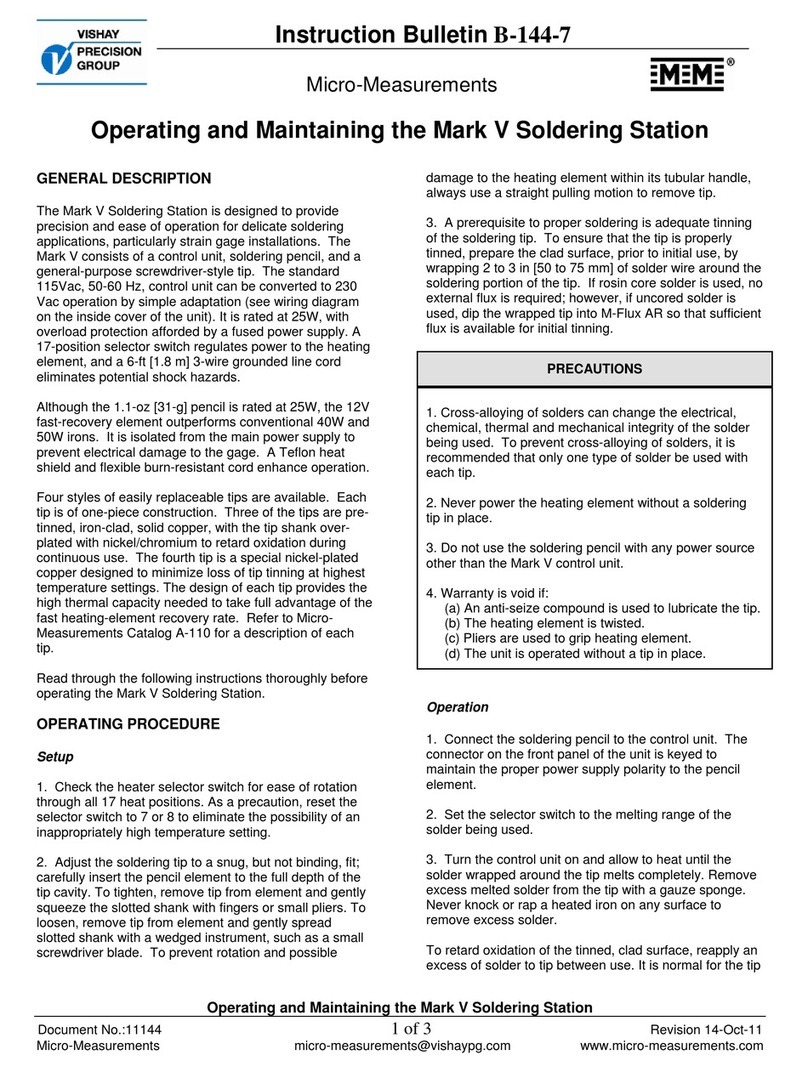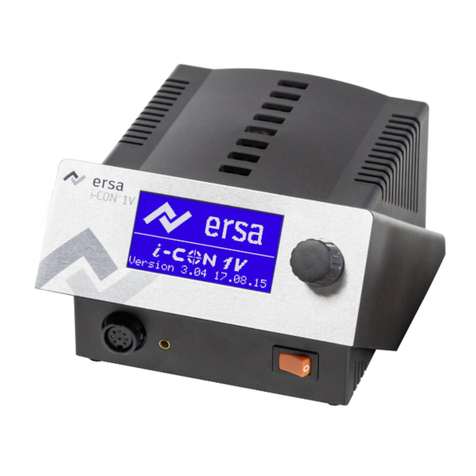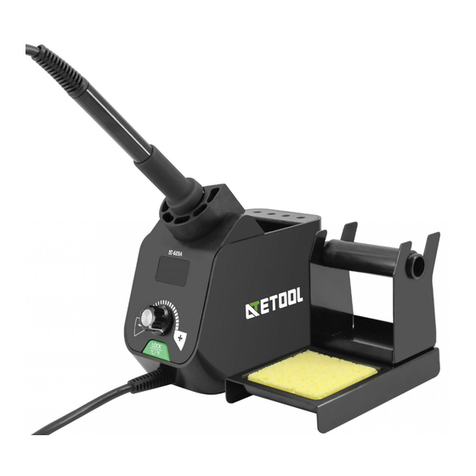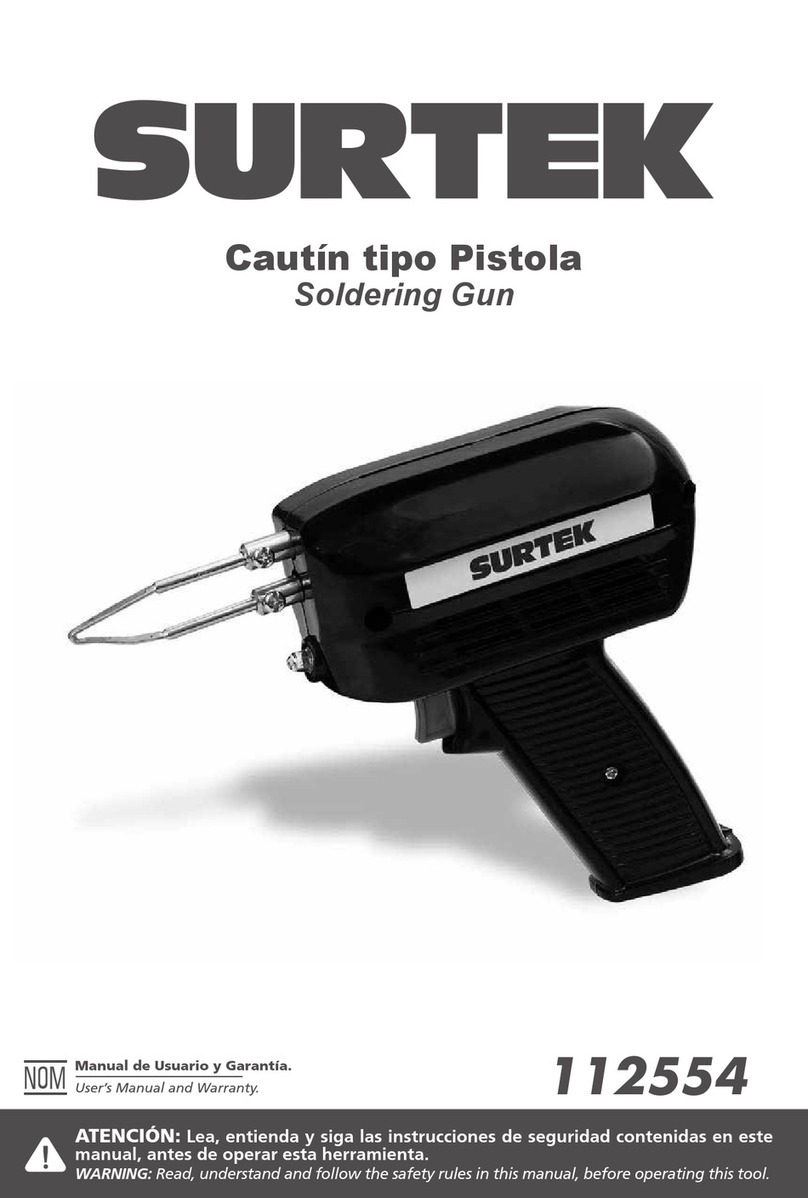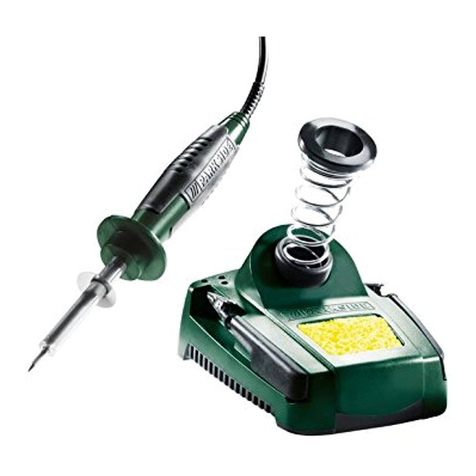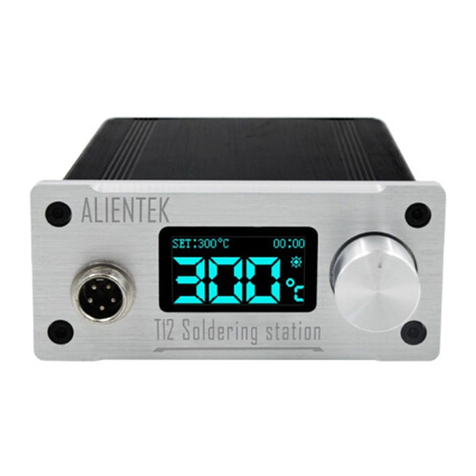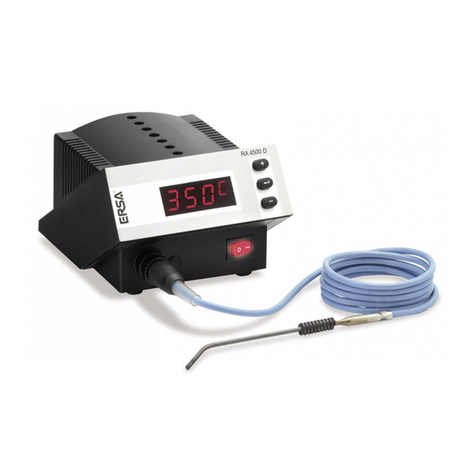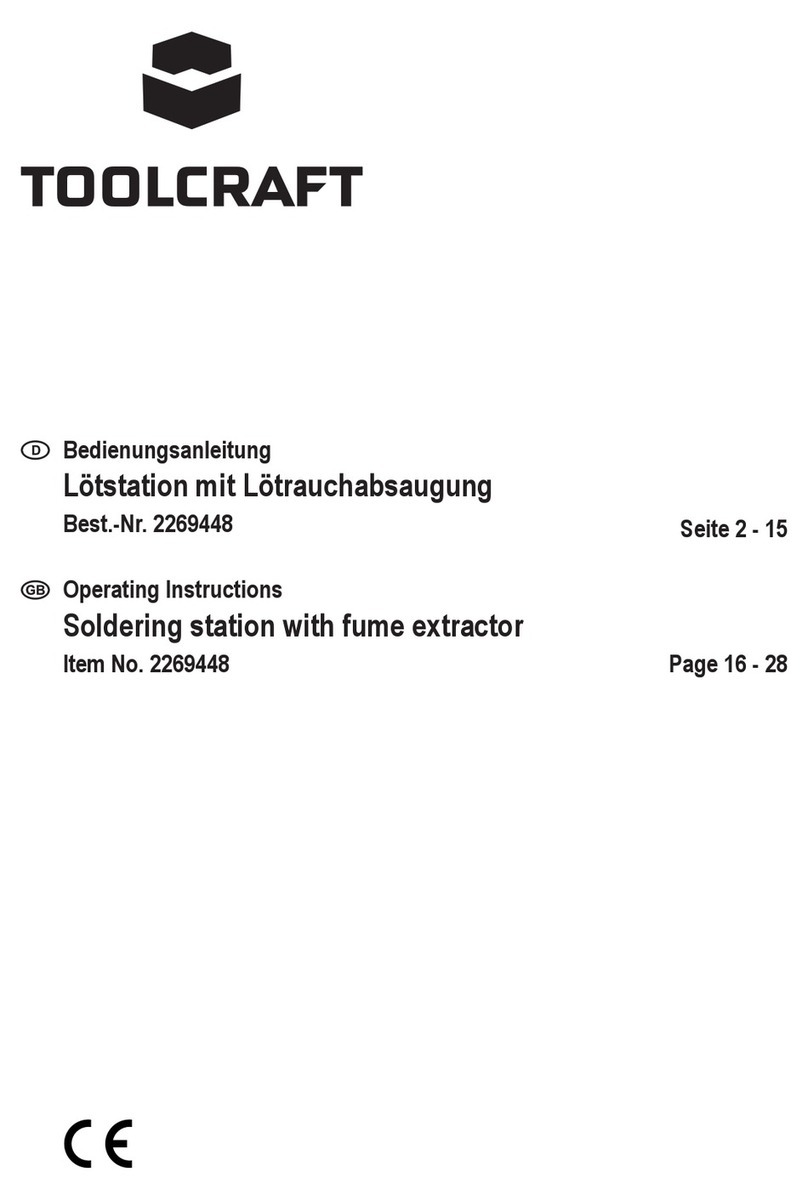1
MODEL WLC100 SOLDERING STATION
PRODUCT DESCRIPTION
The Weller® WLC100 Soldering Station offers adjustable temperature
hand soldering. The tip temperature can be adjusted by varying the
power level of the heater. The power can be adjusted anywhere from 5
watts up to 40 watts with a knob on the base unit. The WLC100 also
provides a built-in iron stand and tip cleaning sponge.
A selection of iron plated tips from a 1/32" conical to a 3/16" screw-
driver tip are available. The WLC100 is supplied with an ST3 1/8"
screwdriver tip. Refer to the tip table for other styles available. The
WLC100 is U.L. listed.
WLC100 OPERATING INSTRUCTIONS
Unpack the unit carefully. Place tool holder in slot provided in top of unit. Wet sponge. Distilled water is preferred, espe-
cially in areas where tap water has a high mineral content. Insert tool into holder.
Insert line cord plug into 120 volt A.C. receptacle. Turn on unit with rocker switch. Set power control knob to 5 to heat tool
up quickly. Wait 1 minute. Lower settings take longer to reach operating temperature. Adjust control to a lower setting.
Remove tool from holder and tin tip with solder. Unit is now ready for use. Always use the lowest power setting that will
handle the load you are soldering. By using lower settings and properly selecting tip styles, sensitive components will be
protected from heat damage.
TIPS ON SOLDERING
Soldering is the fastest and easiest way to join metals. The solder, usually an alloy of tin and lead, has a low melting point
and is run into the joint, using the parts together. A soldered joint is stable and electrically efficient. However, it is not
capable of taking a lot of stress or movement. To make a soldered joint, you need: 1) a source of heat, 2) CLEAN metal
surfaces to be joined, 3) a suitable grade of solder, 4) flux - Rosin core solder is what you need for the majority of jobs. It
means that you dont have to bother about separate flux. Rosin core solder must be used for any electrical connection. Now
here is what you have to do.
1. Ensure that items to be soldered are perfectly clean. This can be achieved with wire wood or fine emery cloth. Just
because a piece of metal looks bright and clean it may not be.
2. Make a good mechanical connection by wrapping wires around each other or around a terminal.
3. When applying heat, do not apply it to the solder. Heat the base material, e.g. wires so they become sufficiently
hot to melt the solder and flow it into the joint. A small amount of fresh solder on the tip when you begin soldering
will help to carry heat from the iron to the joint.
4. When solder has been applied to a joint smoothly slide the iron away to leave the joint neat.
5. Avoid moving joint or wire after removing iron. Blowing on the joint will speed cooling.
6. On electrical and electronic components avoid too much heat. A heat sink can be used to dissipate heat away from
the component.
7. Dont apply more solder than needed. Excess solder can cause short circuits.
8. It is advisable to pre tin components before soldering, especially stranded wire. Twist the strands together, then
heat and saturate with solder.
9. Sweating a joint is easy after tinning. Just twist wires together and apply heat.
10. To desolder a joint apply heat and use a soldering aid like solder wick to remove solder and separate joint. Be sure
to use new solder when re-soldering.
11. Fumes from some fluxes can be unpleasant so be sure there is good ventilation in the work area.
12. Dont use a file to clean soldering tip, wiping on a wet sponge when tip is hot should keep tip clean.

